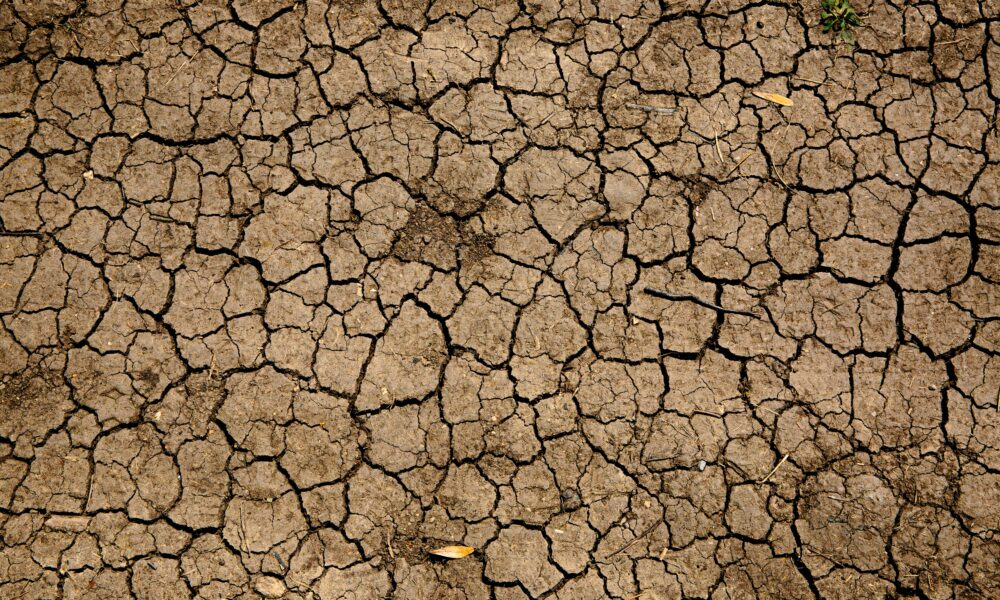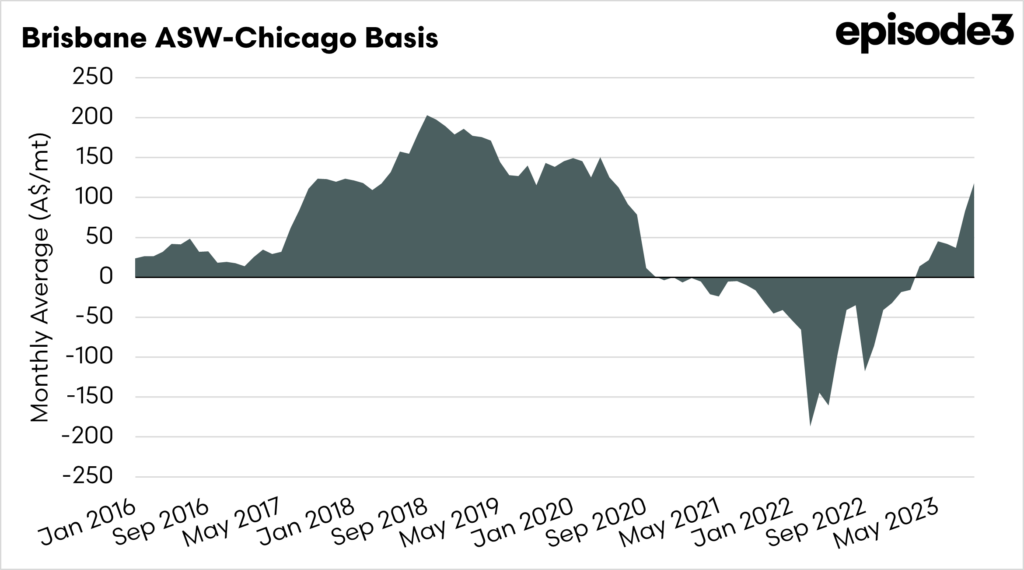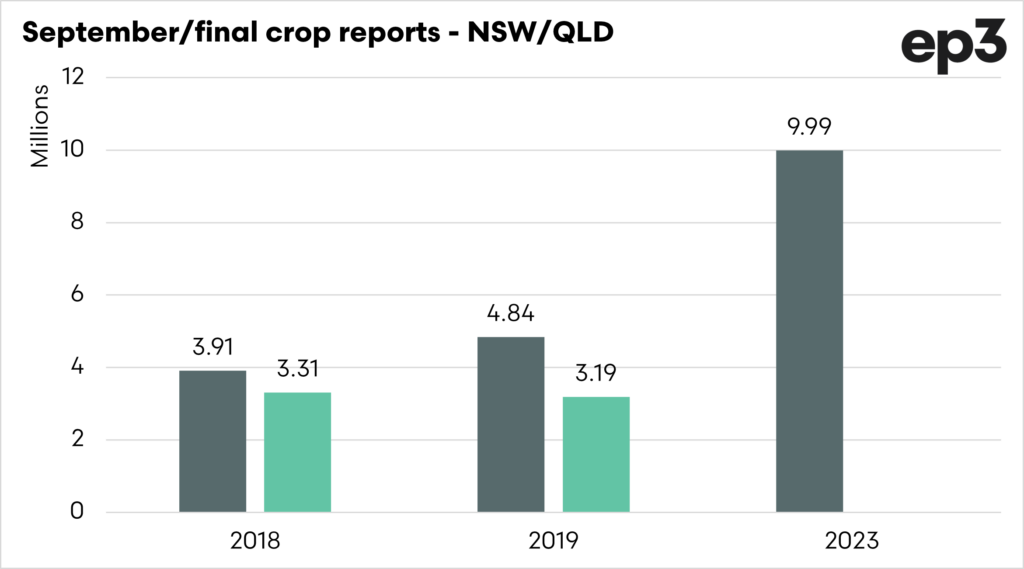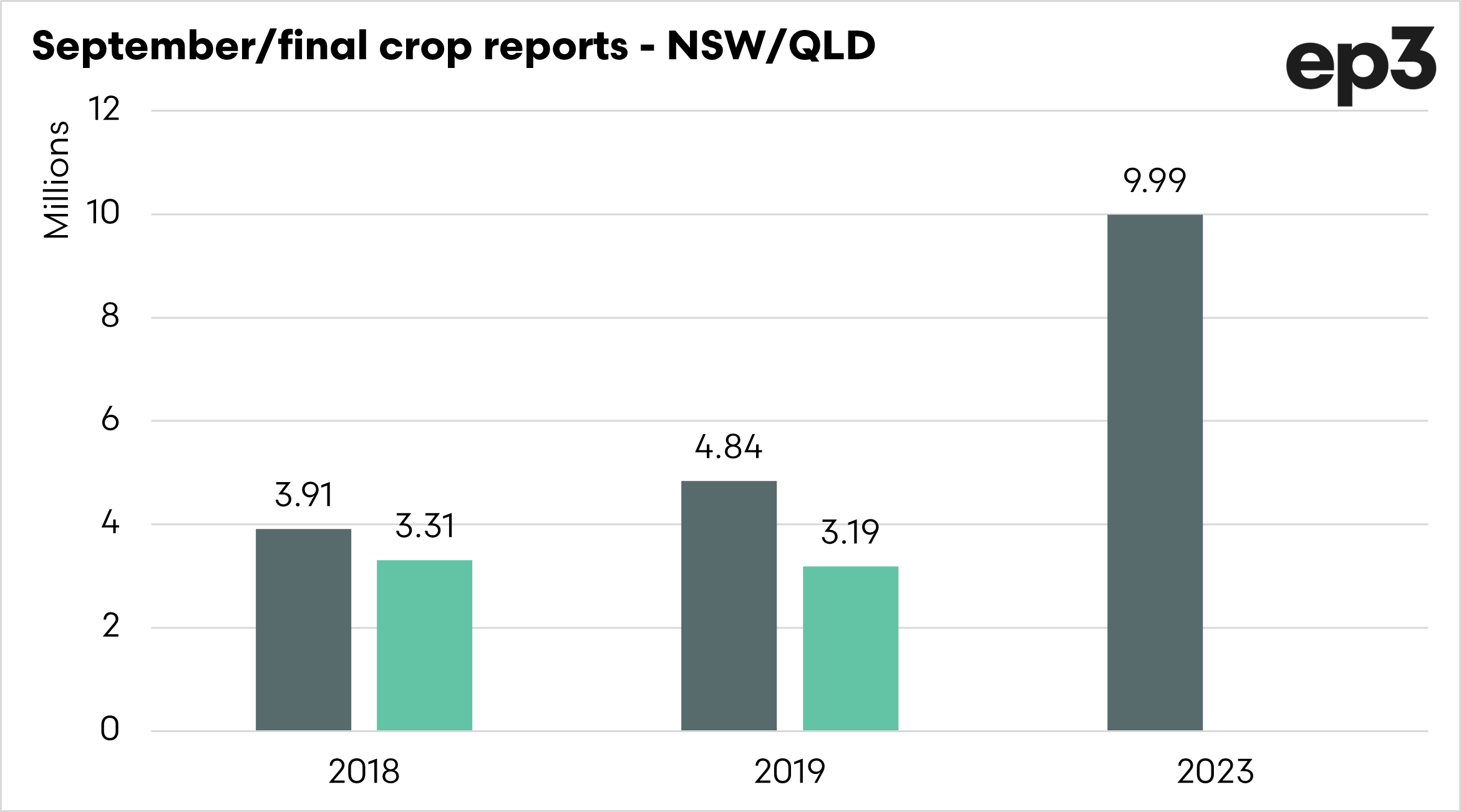Market Morsel: The drought premium in Australia.

Market Morsel
The bumper years are over. We have had three huge years producing massive crops nationally. The dryness is here, at least in patches.
Prices are generally a good barometer. We can use them to determine what people are thinking. Let’s look at the first chart below.
This chart shows the basis level (premium or discount) between Brisbane ASW and Chicago wheat futures.
The Northern New South Wales / Southern Queensland region is where the bulk of the country’s domestic demand for grains is located. So when it gets dry in these regions, grain has to be pulled from all over to meet the domestic demand.
Consumers have a long memory, and with talk of El Nino and drying conditions, they don’t want to get left short.
So, back to the chart. 2018 and 2019 were years of massive premiums over Chicago wheat; this was due to the drought. We can see that the premium in Brisbane has increased markedly in recent months.
At present, the premium is still way off the peak drought premiums. We are A$84/mt off that level. Will we get to that level this year? Will we see those types of premiums over Chicago?
Let’s look at the current situation. The crop conditions are deteriorating, and we expect that there will be downward revisions as we move forward into harvest. The question is just how far.
The second chart shows the combined Queensland/NSW wheat and barley production expectations for 2018, 2019 and 2023. I have selected the September forecasts and the final forecasts. There were significant revisions downwards from the September forecasts.
The current forecasts are substantially higher this year than in September 2018 and 2019. We expect revisions, but not to near the levels experienced in those years. This reduces the need to move large quantities from neighbouring states (SA/VIC) or even transhipments.
We do expect basis to be positive, but it is hard (at present) to see basis levels rising to the peaks of 2018 and 2019; we just aren’t at that level of drought yet.




